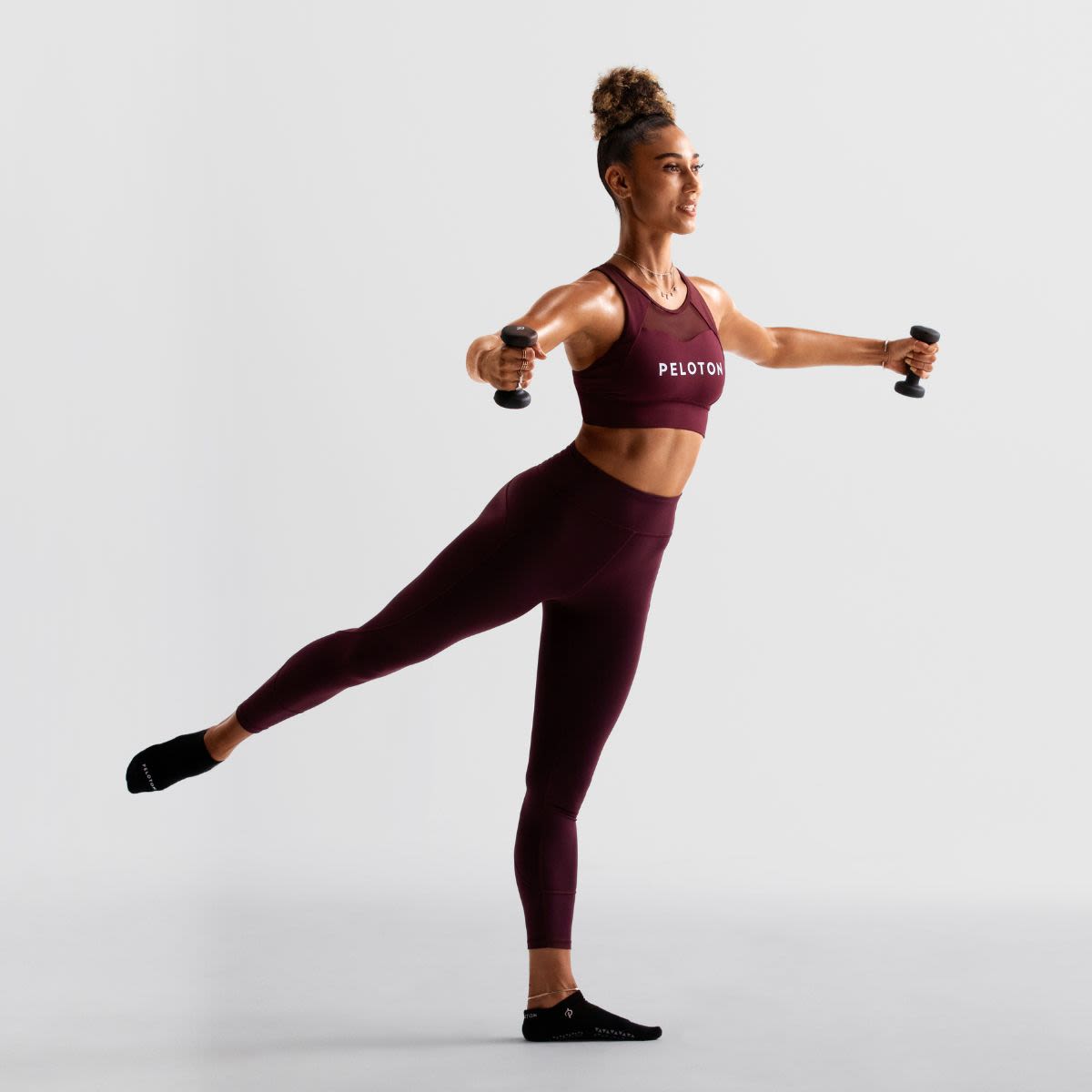
Curious About Barre? Here's Everything You Need to Know Before Your First Class
You're going to love this whole-body workout.
By Peloton•
Understanding Barre Workouts
Benefits of Barre
Who Should Try Barre Workouts?
Key Elements of Barre Workouts
Basic Barre Moves and Exercises
Barre Moves that Work Your Core
Preparing for Your First Barre Class
Peloton’s Barre Classes
How to Integrate Barre Into Your Workout Routine
Bottom Line on Barre Workouts
If you’re looking for a workout that requires no equipment and minimal previous experience, yet makes you feel stronger, healthier, and more positive about yourself, Barre class could be just the thing you need.
With its high intensity but low-impact way of challenging you, increasing bone density, boosting metabolism, and enhancing cardiovascular endurance—all without putting a strain on ligaments and tendons—it’s little wonder that Barre classes are taking off.
By most accounts, the concept of Barre was developed by Lotte Berk, a modern dancer who adapted the barre routines from her classical ballet training to appeal to a broader audience of exercisers eager to try something new. With a focus on strength, balance, and flexibility, the method took off—and continues to grow in popularity today, with an estimated 3.8 million people participating in Barre classes in 2022 alone.
Understanding Barre Workouts
Barre is a whole-body workout based on movements derived from classical ballet. It engages muscles you don’t normally target, including those deep within your body that typical gym moves like lunges and sit-ups don’t always activate. Barre routines combine high reps and low-impact movements to help you strengthen and sculpt your muscles. Berk’s original idea (which evolved into the Lotte Berk technique) was to help fitness enthusiasts develop dancer-like bodies while strengthening core muscles through something she referred to as the “pelvic tilt exercise.”
Today, Barre classes have evolved into multiple versions. Some incorporate accessories like bands and balls, while others remain pure to bodyweight movements using a traditional dancer barre (a horizontal handrail) for support.
A key difference between Barre class and activities like yoga or Pilates is that it incorporates fast-paced movements that raise your heart rate, thereby strengthening your cardiovascular system while also building strength.
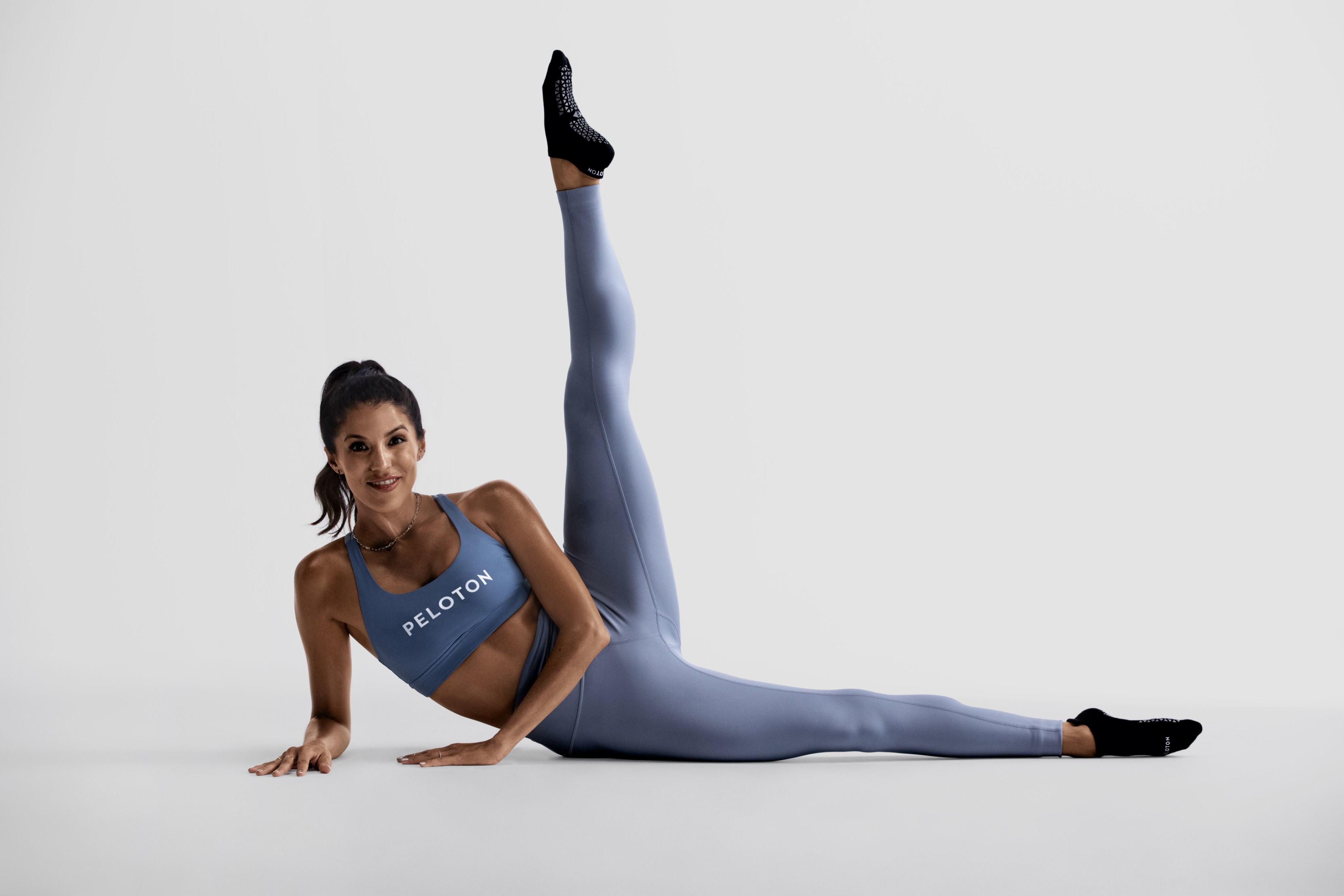
Benefits of Barre
One look at the strong, powerful, yet graceful bodies of dancers, and it’s easy to see the appeal of following in their workout footsteps. But Barre has many other physical, health, and mental benefits as well. These include:
Improved posture. The strengthening of your chest and shoulder muscles during Barre practice enables you to stand taller and prevents you from slouching.
Stronger glutes. Barre works these muscles to stabilize your pelvis, thereby alleviating pressure on your back, hips, and knees.
Toned abdominals. With its focus on balance and strength, Barre provides an intense core workout, which enables your abdominal muscles to hold your body in correct alignment.
Increased flexibility. Ballet’s focus on posture and stretching is on display with Barre moves that push your body’s range of motion to its limit.
Reduced stress. Like most forms of exercise, Barre has a calming effect as you concentrate on the small, precise movements that are utilized.
Increased mental clarity. Aerobic exercise like Barre releases endorphins that improve cognitive processing, keeping your mind sharp and positively focused.
Increased heart rate and cardiovascular endurance. Improved blood flow not only supplies your muscles with fresh blood and oxygen, it also flushes muscle waste back to your kidneys. Efficient waste management results in faster recovery times, less soreness following a workout, and overall improved tissue health.
Increased metabolism. Barre and other aerobic workouts boost your metabolism, enabling you to burn more calories while exercising.
Increased bone density. Regular Barre workouts build stronger bones, helping to prevent conditions like osteoporosis and avoid injury.
Quick results. After just a few weeks of consistent Barre classes, you’ll begin to see a difference in your body. You’ll also feel stronger, more energetic and more agile.
Who Should Try Barre Workouts?
With all those perks, it’s natural to want to give Barre workouts a try. But let’s say you’ve never taken ballet and you wouldn’t know a tendu from fondue if your life depended on it (if you also didn’t know that those two words rhyme, it’s OK, this is a safe space!). You can relax: There are no prerequisites for taking Barre class. You can be a fitness beginner or an advanced gym goer and still reap the benefits of Barre.
Some people, though, should tread carefully. If you’ve had any back injuries, for instance, talk with your doctor before signing up for Barre: Many moves involve bending and straightening your spine. Similarly, with all that bending over and standing up, if you have low blood pressure or are prone to dizziness, talk with your doc before trying one of these classes.
Whether or not you and Barre are a good match will also depend on your fitness goals. While the movements build strong muscles, they might not add as much muscle as lifting heavier loads. And while the classes are aerobic, they still may not get your heart pumping like sprints on the Peloton Tread. Mostly though, as a part of a well-rounded workout routine, Barre can play a meaningful role in helping develop your fitness.
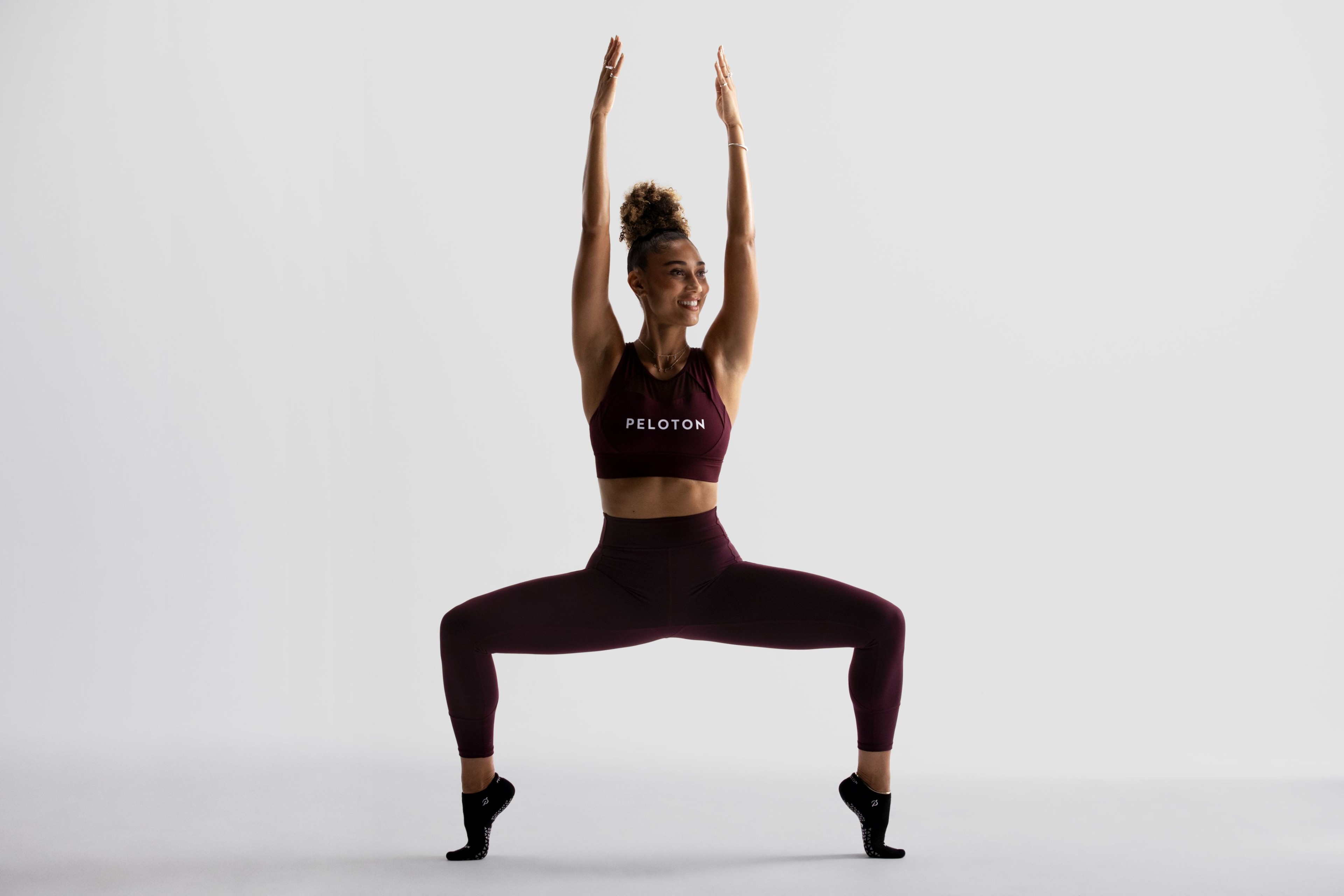
Key Elements of Barre Workouts
When you do Barre classes from home, the class may include extra equipment, such as resistance bands, exercise balls, small hand weights, and a mat. Some classes may utilize a chair that you hold onto like a “ballet barre.” Throughout the class, your instructor will either lead exercises by example and/or demonstrate from different positions.
Peloton Barre classes typically last between 5-45 minutes. They’ll start with a warmup and then include a mixture of barre, cardio, and stretch sections that may include the aforementioned equipment. For much of the class, you will be doing your exercise with one or both hands on the chair.
Your focus in Barre class will be on your form and posture. Because dancers rely on their core to carry themselves through movements, in Barre class, your instructor will emphasize standing tall with your shoulders back and down and engaging your abdominal muscles. This can be hard if you’re not used to activating these muscles. If you need to take a break, it’s totally fine. Realize that it can take time to build up endurance.
Basic Barre Moves and Exercises
The beauty of Barre class is that even though it’s likely all new to you on your first day, many of the moves are foundational, meaning they occur again and again throughout the class. So once you learn them once, you’re more than halfway there! Some of the popular Barre positions include these six lower-body moves:
1. Wide Leg Bend
This is what would be termed, in classical ballet, as a grand plié.
Start with a wide stance, toes facing the front diagonally.
Keeping your back straight, bend your knees to a 90-degree angle (so that your knees are over your toes).
Begin to straighten your knees until they are at a 45 degree angle. Stop, and lower again. Repeat 16 times.
Muscles worked: Quadriceps, glutes abdominals
2. V-Position Bend
This basic move develops strength in your calves as well as overall lower-body balance and stability.
Start with your legs straight and heels together, toes two inches apart.
Bend your knees to 45 degrees and lift your heels 1”-2” off the ground.
Bend both knees to 90 degrees, making a diamond shape with your legs.
Straighten halfway (45 degrees), then deepen the bend again.
Repeat 16 times.
Muscles worked: Calves, quadriceps, glutes, abdominals
3. Parallel Bent Knees
This challenging Barre move develops core stability.
Begin with feet hip-width apart and toes facing forward.
Extend your right leg directly behind you and bend both of your knees.
Tuck your pelvis forward and lift your left heel off the ground.
Pulse your right leg backward while keeping your pelvis tucked.
Repeat this movement 16 times on the right side, then on the left side.
Muscles worked: Calves, hamstrings, glutes, abdominals
4. Straight Leg Turn Outs
Tendu is one of the staple moves in classical ballet. You’ll start with that move, then build on it here.
Start with your feet hip-width apart. Extend your right leg back diagonally with a flexed foot, knee turned out.
Lift and lower your right leg about 12 inches.
Repeat this movement 16 times on the right and then switch legs and repeat on the left side.
Muscles worked: Glutes, hamstrings, hips
5. Clamshell
This move isn’t unique to Barre workouts, but it helps develop key hip and inner thigh strength that will help you with other Barre exercises.
Start by lying on your left side.
Bendyour knees and raise both feet together toward your butt.
From this position, open the top (right) knee until it points to the ceiling. Lower and close.
Repeat this movement 16 times; switch sides and repeat 16 times on the left side.
Muscles worked: Glutes, adductors, pectineus, sartorius (inner and outer thigh muscles)
6. Frog Lift
Strengthen your lower back while building your glutes in this frog-like position.
Lie on your stomach with your forehead resting on your hands, legs spread about a foot apart.
Bend both knees and raise the soles of your feet toward the ceiling.
Gently rotate lower legs so that your toes touch together.
Squeeze your glutes and lift your knees off the ground, toes reaching toward the ceiling.
Repeat this move 16 times.
Muscles worked: Glutes, lower back, hamstrings
Barre Moves that Work Your Core
In addition to these foundational moves, you’re likely to encounter a handful of simple Barre exercises again and again in class. Examples of some popular Barre exercises that work your core muscles (note: not all involve using the barre!) include:
1. X Abs
This move develops core strength. Talk with your doctor first before trying it if you have any back issues.
Start by lying on your back with your arms and legs splayed out in an X position.
Use your abdominal muscles to roll your body up to a sitting position as you reach your left hand toward your right ankle.
As your left arm reaches across your body, raise your right leg to meet your left hand.
Roll back down.
Repeat on the opposite side and continue alternating sides.
Muscles worked: Abdominals, back
2. V-Ups
This move can be challenging for beginners. If that’s you, modify the exercise by keeping your legs on the floor and focus on raising just your torso.
Start by lying on your back with your arms straight and raised above your head so that they are in line with your ears.
Keep your legs straight and together on the floor.
Engage your abs and simultaneously lift your arms, torso, and legs toward the ceiling, creating a V-like position in which your legs and toes remain straight.
Release back to the start. Repeat.
Muscles worked: Abdominals, back, quadriceps
3. Dancer Side Bends
Barre doesn’t just work your rectus abdominus (front abdominal muscles); it works your obliques and latissimus dorsi (side abdominal muscles) as well with exercises like this one.
Start by standing with your feet wider than hip-width apart, toes moderately turned out.
Extend your arms above your head.
Engage your core and reach arms over your head and out to the right side while bending your torso to the right.
Keep your chest facing forward, so that you feel an intense stretch along your left side and muscles working on your right side. Bend as far as you can while engaging your abs.
Hold for three seconds. Return to start and repeat the same movement on the left side.
Muscles worked: Latissimus dorsi, obliques, back
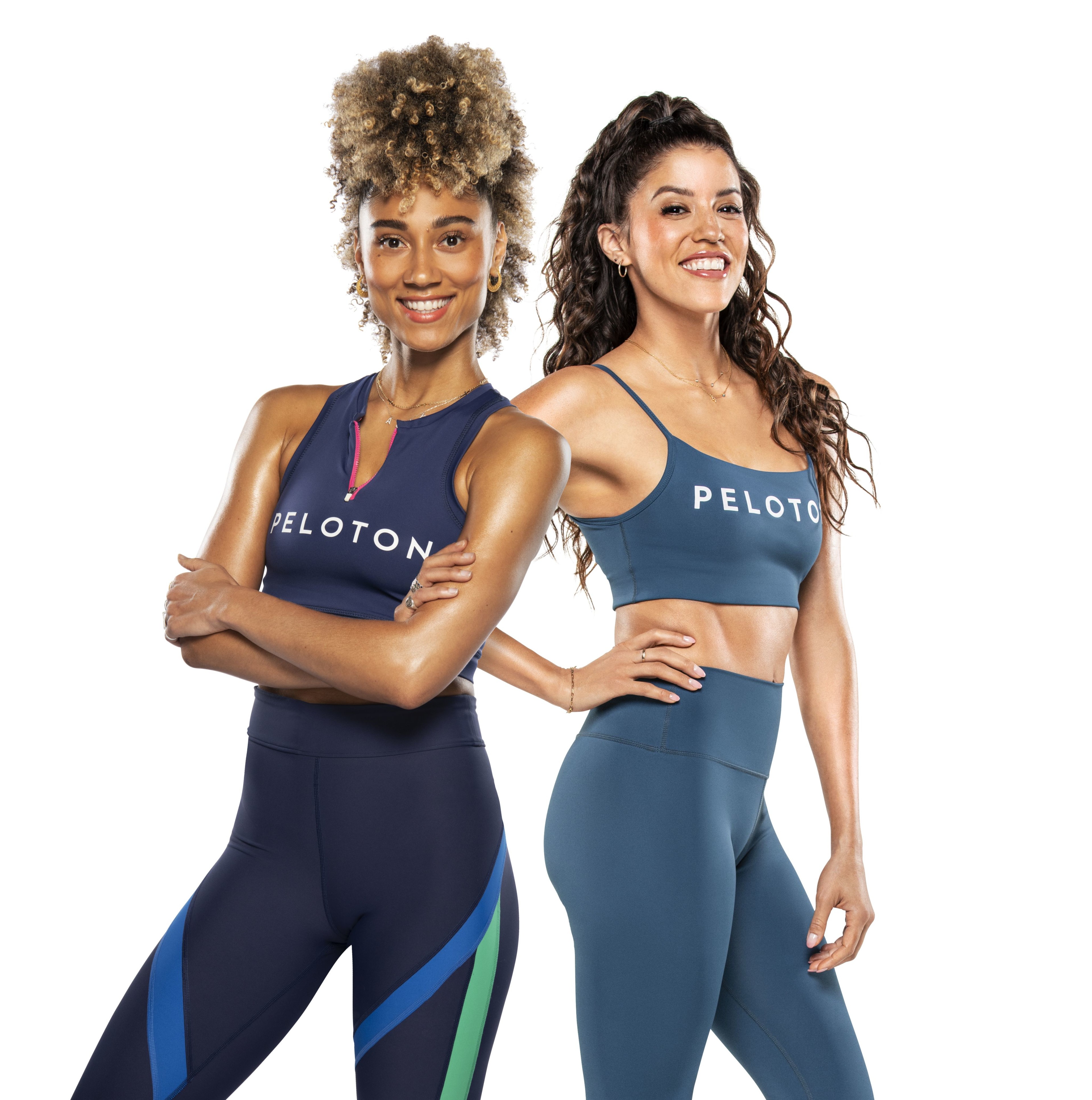
Preparing for Your First Barre Class
It can feel like the first day of school if you sign up for a new form of fitness. What to wear? What do I need? What can you expect and how do you get the most out of your experience? Let’s break it down.
What to Wear
The most common female attire for a Barre fitness class is leggings, a tank or breathable top over a sports bra, biker shorts, and no shoes. For men, stretchy shorts are best since they’ll give you the freedom to execute Barre moves without worry about splitting your pants. For both, grip socks are a must for traction.
What You Need
Some Barre classes require no equipment, but some will. As mentioned above, you may use a chair, mat, light weights, or a ball. Consider having a water bottle to hydrate and a towel to wipe off after your session. (It can also come in hand to dry sweaty palms during your workout, since these can make it harder to get a good grip on the chair.)
What to Expect
A Barre workout is a fun yet effective way to strengthen and tone your whole body. But that doesn’t mean it’s easy. If this is your first class, you can expect to be a little confused at certain points when the instructor calls out certain moves or positions. Don’t sweat it. With a class or two under your belt, all that language will start to feel familiar. In the meantime, get the most out of your experience by watching what your instructor is doing, and following along as best you can. And remember, it’s always fine to take a break when you need one!
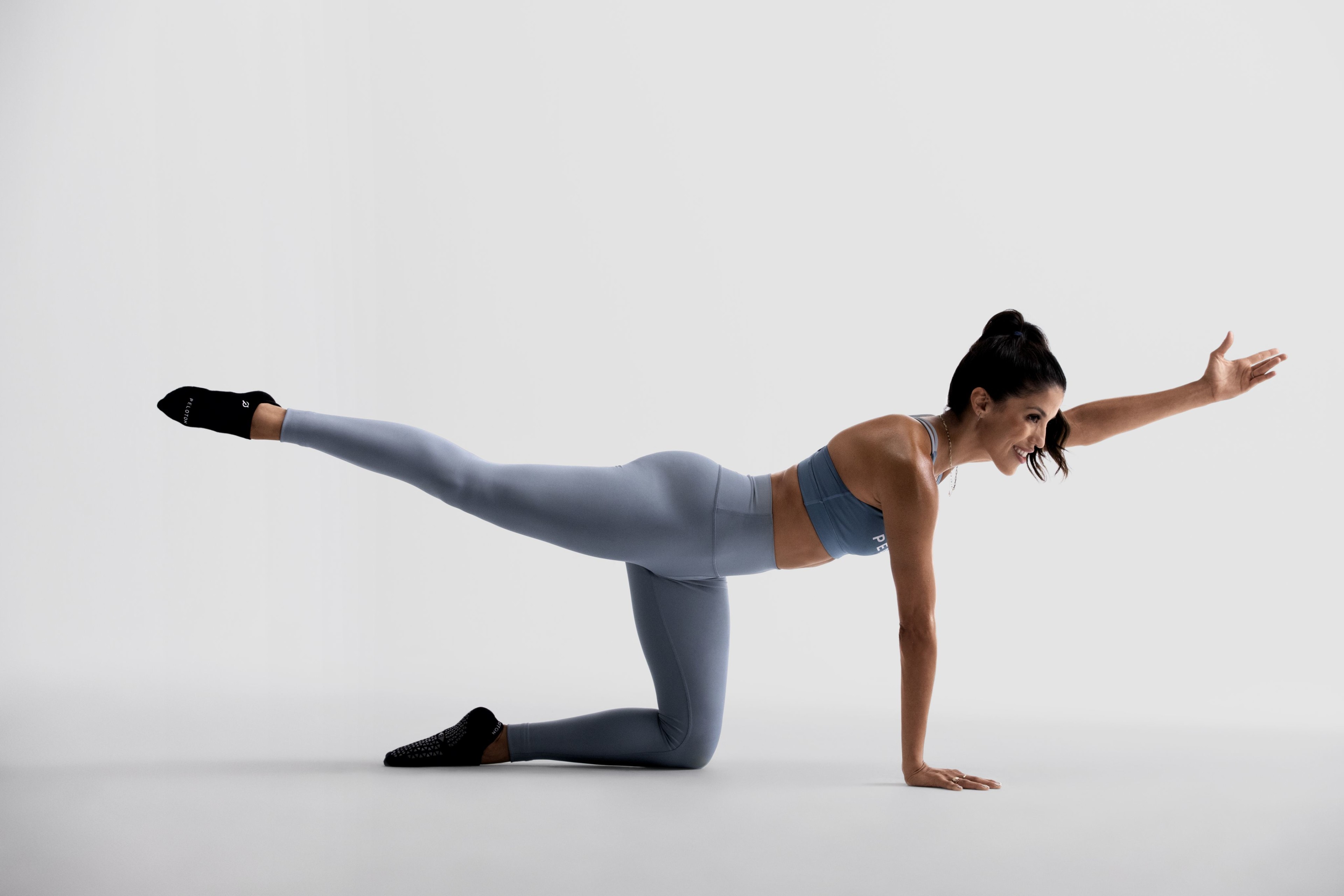
Peloton’s Barre Classes
Peloton offers an array of Barre classes that can be tailored to individual fitness and skill levels. The 20-minute Barre class will help you build a stronger core while increasing your flexibility and balance. Barre classes for Peloton are taught by instructors Ally Love and Hannah Corbin, both of whom are former dancers. As Ally and Hannah like to say, Barre is the ideal workout for anyone looking for fun, dynamic, and music-filled workouts that target a variety of muscle groups.
How to Integrate Barre Into Your Workout Routine
There is no right or wrong way to fit Barre class into your weekly workout schedule: How many or few classes you take depends in part on what your overall fitness goals are. If you’re looking to build long, lean muscles while boosting your heart rate and getting an aerobic workout, Barre can be very helpful. Start with a twice weekly class schedule—consider taking Barre class on days following an intense cardio session to help your body recover while still providing low-impact stimulation to your muscles.
You might also consider taking Barre class prior to a strength-training day. A 20-minute Barre session will warm up your muscles and get the blood pumping so you can maximize the benefits of a weights workout.
The most important thing, as with any form of exercise, is that you stick with it. Best results come from being consistent with your Barre classes, and to do that, you need to avoid injury or burnout. Start slowly and modify any moves that feel too intense. As you get more familiar with the moves and the muscles being worked, you can go longer or add more sessions to your routine.
Bottom Line on Barre Workouts
Your fastest way to a fitter body is to incorporate a wide range of activities into your weekly workouts. Working the same muscles over and over again makes those muscles stronger—but everything else gets weaker. Barre workouts target a unique group of core muscles often overlooked in other forms of exercise. They also help you develop the balance and flexibility that can prevent injury down the road.
Also, Barre workouts are just plain fun! Curious to learn more about what Peloton Barre classes are about? Download the Peloton App and try for free.

Peloton App
Access thousands of classes with no equipment needed.
This content is for informational and educational purposes only and does not constitute individualized advice. It is not intended to replace professional medical evaluation, diagnosis, or treatment. Seek the advice of your physician for questions you may have regarding your health or a medical condition. If you are having a medical emergency, call your physician or 911 immediately.
Level up your inbox.
Subscribe for a weekly dose of fitness, plus the latest promos, launches, and events.
By providing your email address, you agree to receive marketing communications from Peloton.
For more about how we use your information, see our Privacy Policy.





